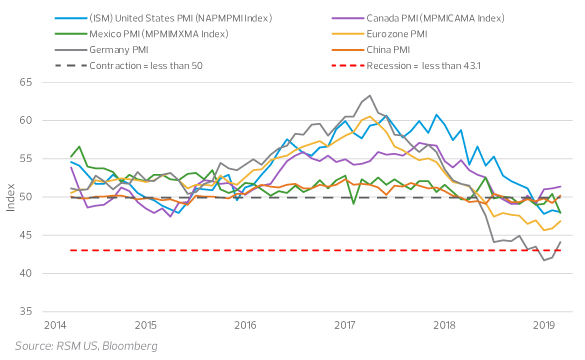A slowing global economy, volatile trade agreements and ongoing labor shortages are creating headwinds for manufacturers—especially on the sales front. Nevertheless, innovative technology, stable overall U.S. economic growth and a focus on driving value to stakeholders offer multiple prospects for sustainability and growth. Looking ahead, manufacturers will need to thread the needle between uncertainty and opportunity:
1. The inevitability of digital transformation
80% of manufacturers say that digital transformation has become a higher strategic priority in the past three to five years.1
There is strong agreement that digital transformation is critical for remaining relevant, competitive and viable. Success requires acceptance that digital transformation—or, as some put it, digital evolution—is an ongoing project requiring a significant change-management effort, active top senior management buy-in and enterprise-wide participation.
Enabling adoption, assessing returns on investments, predicting future needs and aligning legacy systems are the most challenging considerations for middle market manufacturers, according to a recent digital transformation survey conducted by RSM US. Despite understanding the advantages of technology, many manufacturers are hesitant to change course or do not have a clear picture of the ROI. Yet more than 80% felt that their digital priorities will change over the next three to five years, setting the stage for challenges to strategic investment priorities.
Data is critical; running a business without product segmentation and profit analysis is like guiding the Costa Del Mar cruise ship. To meet their digital needs, a plurality of manufacturers are hiring experienced specialists as well as developing apprenticeship and certification programs as their leading enablement strategies in the digital space.



